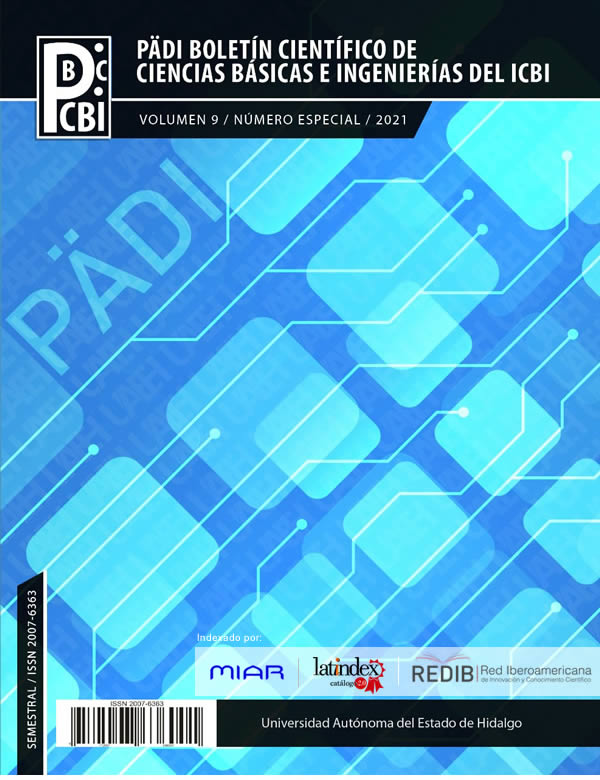Resolución de problemas en el aprendizaje y enseñanza de las matemáticas
DOI:
https://doi.org/10.29057/icbi.v9iEspecial.7051Palabras clave:
Resolución de problemas, aprendizaje por descubrimiento, pensamiento matemático, creatividadResumen
En este artículo se caracteriza una perspectiva de la resolución de problemas como aproximación didáctica. Particularmente se identifican aquellos aspectos de una comunidad de aprendizaje que favorecen el desarrollo de un aprendizaje con entendimiento, a partir de las contribuciones de diversos matemáticos y educadores matemáticos, entre los que se encuentran George Polya, Paul Halmos, Jaques Hadamard, Alan Schoenfeld, James Hiebert y Richard Lesh.
Descargas
Información de Publicación
Perfiles de revisores N/D
Declaraciones del autor
Indexado en
- Sociedad académica
- N/D
Citas
August Kekulé. (2021, abril 26). En Wikipedia. https://es.wikipedia.org/wiki/August_Kekul%C3%A9
Barrera-Mora, F., & Reyes-Rodriguez, A. (2016). Designing technology-based tasks for enhancing mathematical understanding through problem solving. In L. Uden, D. Liberona and B. Feldmann (Eds.), Learning technology for education in cloud: The changing face of education (pp. 183-192). Switzerland: Springer.
Cai, J. Nie, B. (2007). Problem solving in Chinese mathematics education: research and practice. ZDM–The International Journal on Mathematics Education, 39, 459–473.
Camacho, M., Santos, M., (2004). La relevancia de los problemas en el aprendizaje de las matemáticas a través de la resolución de problemas. Números: Revista de Didáctica de las Matemáticas 58, 45-60.
Carpenter, T., & Lehrer, R. (1999). Teaching and learning mathematics with understanding. In E. Fennema, & T. Romberg (Eds.), Mathematics classrooms that promote understanding (pp. 19-32). Mahwah, NJ: Lawrence Erlbaum Associates.
Hadamard, J. (1945). The psychology of the invention in the mathematical field. Dover, New York.
Halmos, P. (1980). The heart of mathematics. The American Mathematical Monthly 87, 519-524.
Halmos, P. (1994). What is teaching? The American Mathematical Monthly 101, 848-854.
Halmos, P., Moise, E. E., Piranian, G. (1975). The problem of learning to teach. The American Mathematical Monthly 82, 466-476.
Hamilton, E., Lesh, R., Lester, F., Yoon, C. (2007). The use of reflection tools to build personal models of problem-solving. En Lesh, R., Hamilton, E., Kaput, J. J. (Eds.), Fundations for the future in mathematics education. Lawrence Erlbaum Associates, Mahwah, pp 349-364.
Hiebert, J., Carpenter, T., Fennema, E., Fuson, K., Wearne, D., Murray, H., Oliver, A. & Human, P. (1997). Making Sense: Teaching and learning Mathematics with Understanding. Portsmouth, NH: Heinemann.
Kant, I. (1996). Critique of Pure Reason. Hackett Publishing Company: Indianapolis.
Lesh, R., Doerr, H. M. (2003). Beyond constructivism: Models and modeling perspectives on mathematics problems solving, learning and teaching. Lawrence Erlbaum, Mahwah.
Lesh R., Zawojewski, J.S. (2007). Problem solving and modeling. En Lester F. K. Jr. (Ed.), The second handbook of research on mathematics teaching and learning. Information. Age Publishing, Charlotte, pp 763-804
National Council of Teachers of Mathematics [NCTM]. (2000). Principles and standards for school mathematics. NCTM, Reston.
Polya, G. (1954). Induction and analogy in mathematics. Princeton University Press, Princeton.
Polya, G. (1963). On learning, teaching and learning teaching. The American Mathematical Monthly 70, 605-619.
Polya G. (1973). How to solve it: A new aspect of mathematical method. Princeton University Press, Princeton.
Santos-Trigo, M. (2008). La resolución de problemas matemáticos: avances y perspectivas en la construcción de una agenda de investigación y práctica. En: Memorias del seminario de Resolución de Problemas: 30 años después del XII Simposio de la Sociedad Española de Investigación en Educación Matemática.
Santos-Trigo, M. (2009). Innovación e investigación en educación matemática. Innovación Educativa 9(46), 5-13.
Santos-Trigo, M. (2014). Problem solving in mathematics education. En Lerman, S. (Ed.), Encyclopedia of Mathematics Education. Springer, New York, pp. 496-501.
Schoenfeld, A. (1985). Mathematical problem solving. Academic Press, Orlando.
Schoenfeld, A. (1992). Learning to think mathematically: Problem solving, metacognition, and sense making in mathematics. In D. Grouws (Ed.), Handbook for Research on Mathematics Teaching and Learning (pp. 334-370). New York: MacMillan.
Schoenfeld, A. (2000). Purposes and Methods of Research in Mathematics Education. Notices of the American Mathematical Society, 47(6) pp. 641-649
Szetela, W. & Nicol, C. (1992). Evaluating Problem Solving in Mathematics. Educational Leadership, 49(8), pp. 42-45.
Téllez, J. L (2020). Relación entre el sentido numérico y pensamiento algebraico en bachillerato (Tesis de maestría no publicada). Universidad Autónoma del Estado de Hidalgo.




















